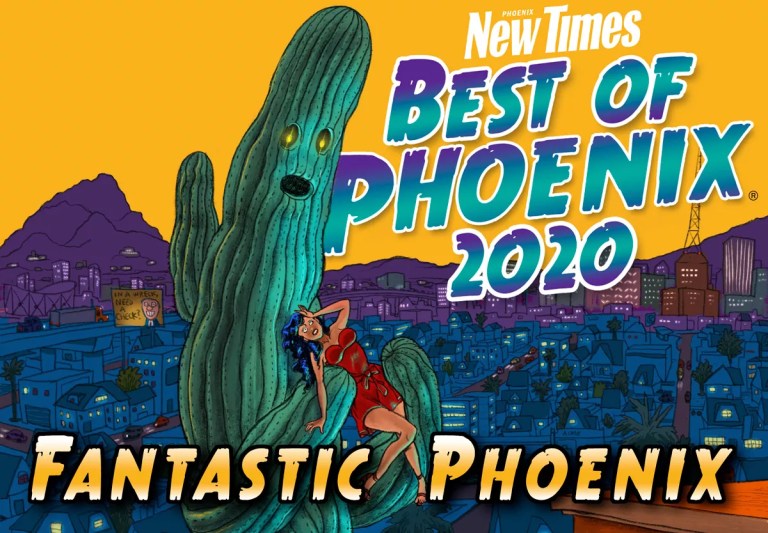Best Art Exhibit
The rich complexity of Indigenous cultures filled 13,000 square feet of gallery space when the Heard Museum opened “Larger Than Memory: Contemporary Art From Indigenous North America” on September 4. Featuring more than 40 works by 24 artists and collaborators — participating artists include Mike Patten (Zagime Anishinabek), Cara Romero (Chemehuevi), Marie Watt (Seneca), and Steven J. Yazzie (Diné/Laguna Pueblo/Anglo); thoughtful curation by Diana Pardue and Erin Joyce — this visually stunning ensemble of artworks challenges viewer perspectives on Indigenous symbols and ordinary objects. Here, red stickers, a baseball bat, a batch of fry bread, and an asthma inhaler take on new connotations. Every artwork has layers of meaning. The more time you spend with this exhibit, the more powerful it becomes.

